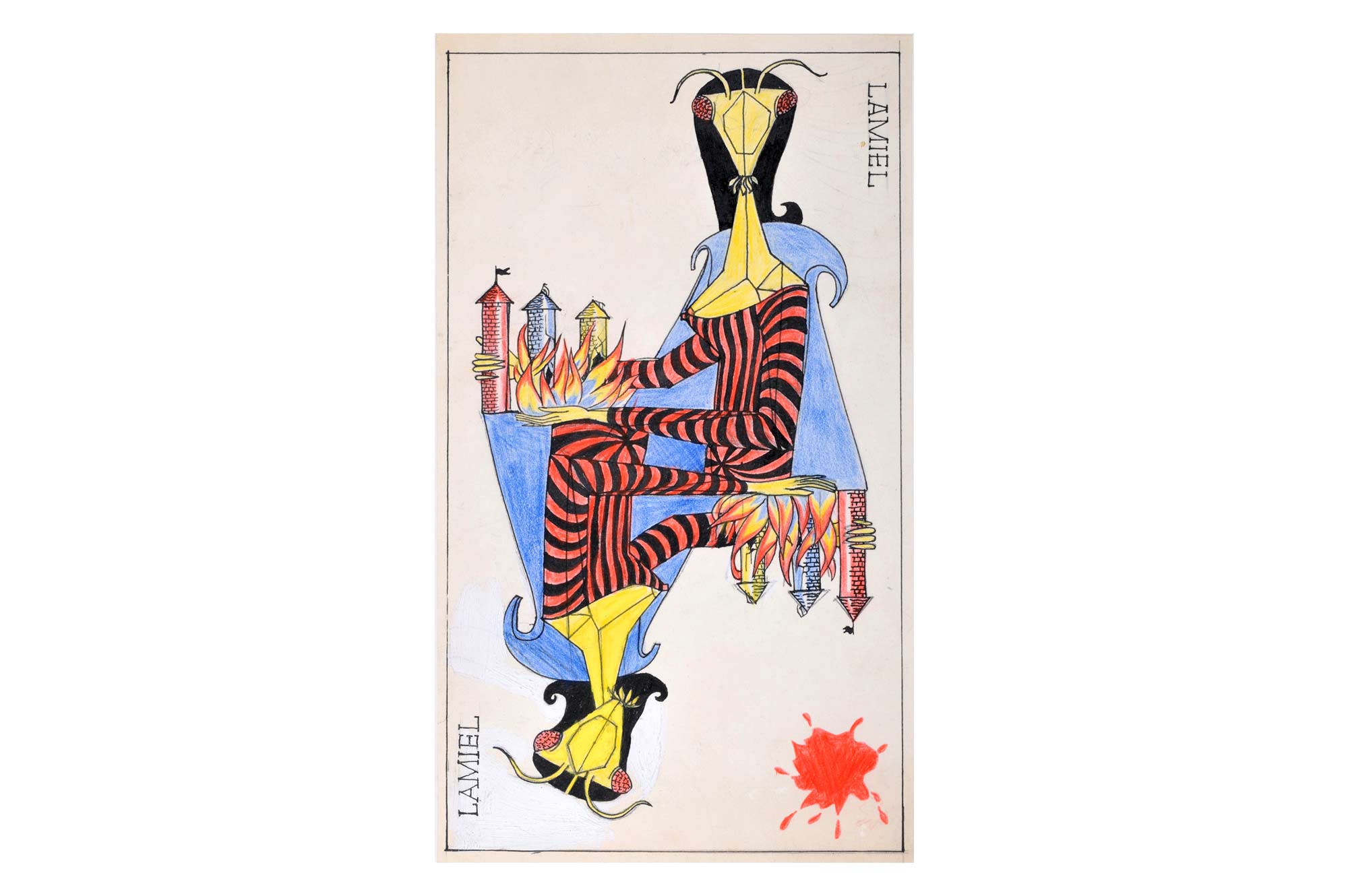Artist Jacques Hérold (1910-1987, RO) was born into a Jewish family in Romania. He studied at the Art Academy of Bucharest, which he abandoned in 1929 and started working at an architecture bureau. In 1930, Hérold moved to France thanks to a ‘fake ID’ and changed his name from Blumer to Hérold. In Paris, Hérold was introduced in Breton’s group. There he also maintained a close friendship with Constantin Brancusi. In 1940, along with other intellectuals, Hérold fled to the Marseille in the hope of obtaining a visa for the United States. However, he did not leave France and hid in the Arab quarter of Porte d’Aix until 1942, where he lived from making croquet-fruits. Having departed from the Surrealist group in 1951, Hérold then turned to Lyrical Abstraction and Tachisme.
Jeu de Marseille
Among the many works by the artists and writers gathered at Villa Air-Bel, the most outstanding is certainly the Jeu de Marseille – a nod to the famous ‘Tarots de Marseille’, which André Breton was studying at the time. The Surrealists reinvented the iconography of a classical deck of cards in terms of the movement’s favourite figures and symbols. The suits became became the flame of Love (represented by Baudelaire, Stendhal’s Portuguese nun, Novalis), the black star of the Dream (Lautréamont, Lewis Carroll’s Alice, Sigmund Freud), the bloody wheel of the Revolution (Marquis de Sade, Lamiel, Pancho Villa) and the lock of Knowledge (Hegel, Hélène Smith, Paracelsus). A random draw determined who would design the different cards: Victor Brauner (Hegel and Hélène Smith), André Breton (Paracelsus and the Ace of Knowledge), Jacques Hérold (Lamiel and Sade), André Masson (La Religieuse portugaise and Novalis), Max Ernst (Pancho Villa and the Ace of Love), Jacqueline Lamba (Ace of Revolution and Baudelaire), Wifredo Lam (Alice and Lautréamont) and Oscar Dominguez (Freud and the Ace of Dream). The joker was based on Alfred Jarry’s drawing of Father Ubu, while Frédéric Delanglade designed the backs of the cards. Frédéric Delanglade was then tasked with standardising the sketches by redrawing them in a continuous line. In 1943, they were published for the first time in New York in the third issue of Revue WW and then edited in 1983 by André Dimanche.









 Jacques Hérold, 'Lamiel. Sirène de révolution - Roue', Jeu de Marseille, Collection Musée Cantini, Marseille
Jacques Hérold, 'Lamiel. Sirène de révolution - Roue', Jeu de Marseille, Collection Musée Cantini, Marseille